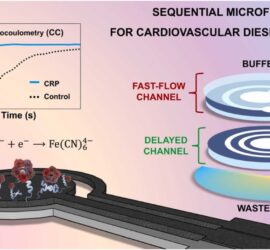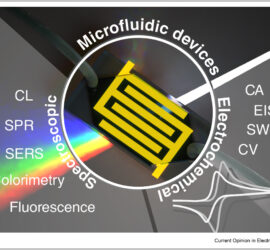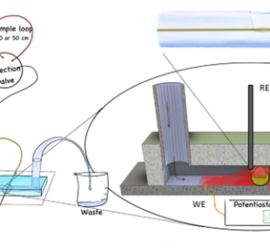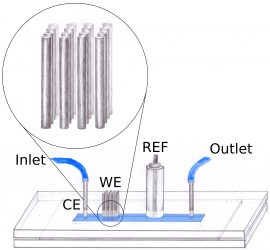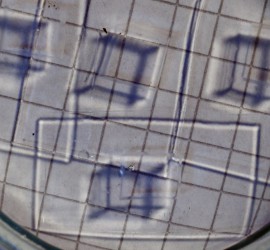In a follow-up from our previous paper on point-of-care sensors for C-reactive protein (CRP), an article based on the same principle was just published in ACS Sensors. There are two main differences: instead of a peptide as recognition element, we used a nanobody, and we used a new smartphone-based potentionstat. […]
microfluidics
Measuring CRP levels in blood usually requires sending a blood sample to the lab for an ELISA test. This takes time… the results typically come only the next day. It would be so much more convenient if you could get the result directly in your doctor’s office. In our latest […]
Together with our partners in the UPTURN project we wrote a short review article about the use of combining electrochemical and optical methods in microfluidic systems. The goal of UPTURN is to create a suitable microfluidic platform for multiparametric measurements. This was a good opportunity to summarise what is available […]
After months of work on the article, Martin and Andrzej finally got their second paper about electrochemical and optical studies using an optical fiber accepted. The article “A microfluidic system for analysis of electrochemical processing using a highly sensitive optical fiber microcavity” will be published in the journal “Optics and […]
After long, hard effort we finally published* our research on pencil lead electrodes as electrode arrays in a microfluidic system. This was first intended as an easy-to-assemble system that could be used e.g. in experiments for high-school students or undergrads. However, from that initial, simple idea it turned out to […]
We just had a new paper published in Microfluidics and Nanofluidics concerning the compatibility of some organic solvents with PDMS-based microfluidic devices. In a well-known study (cited ~1600 times) the Whitesides-group argued that how much PDMS swells in a solvent is a good indication of how compatible that solvent is with […]


